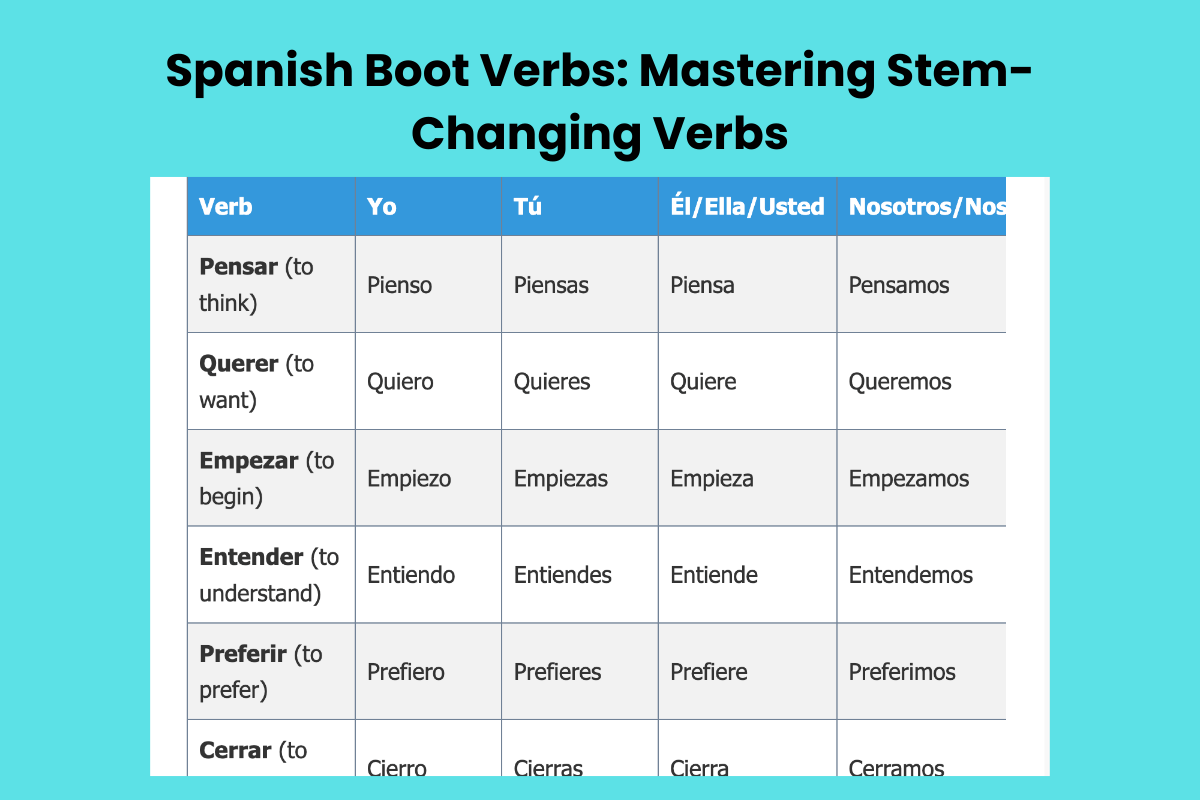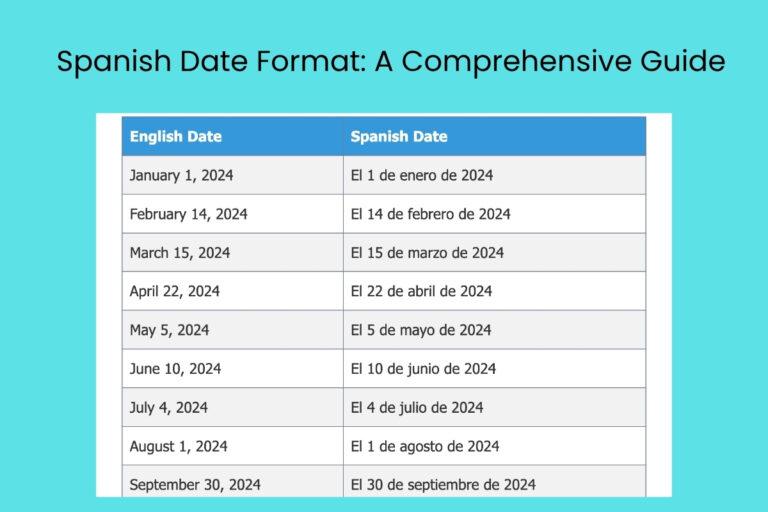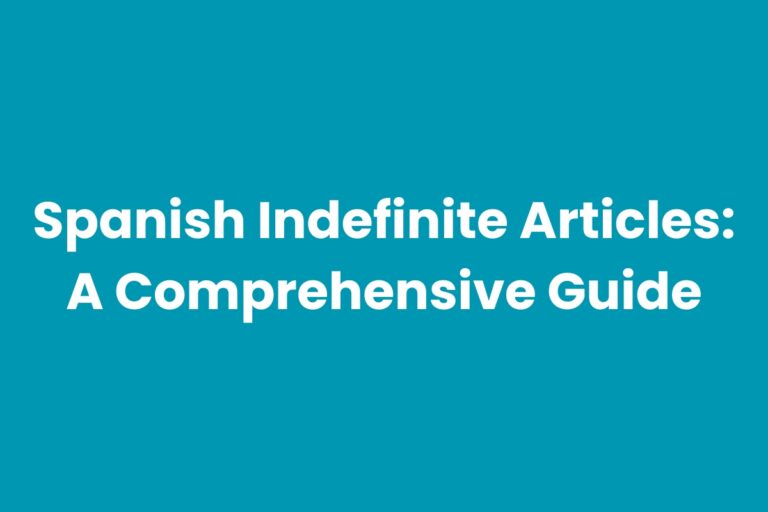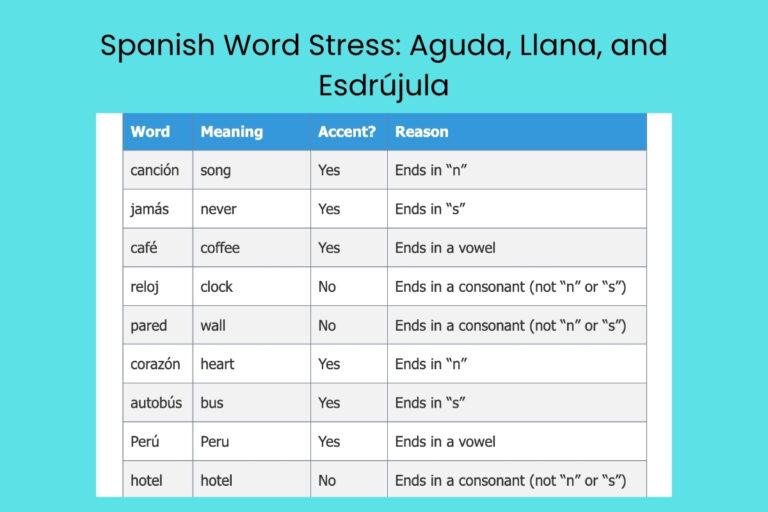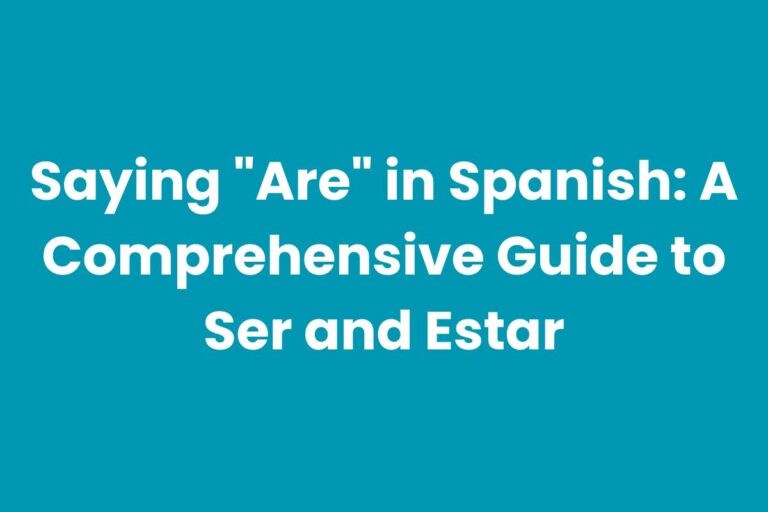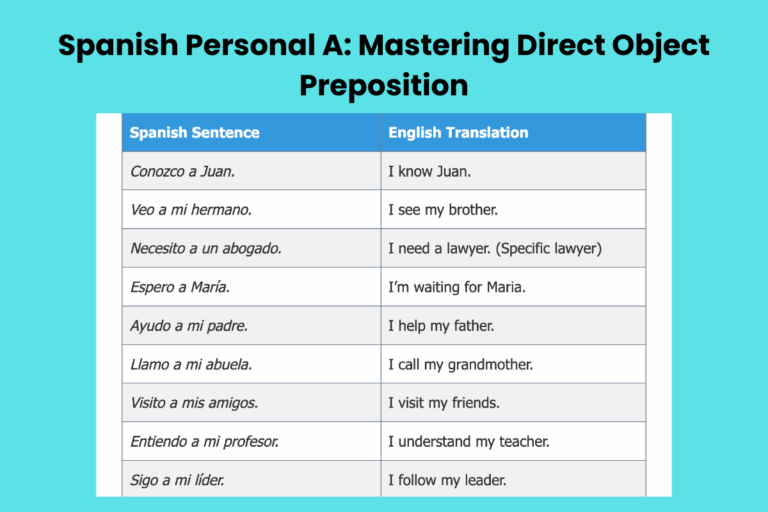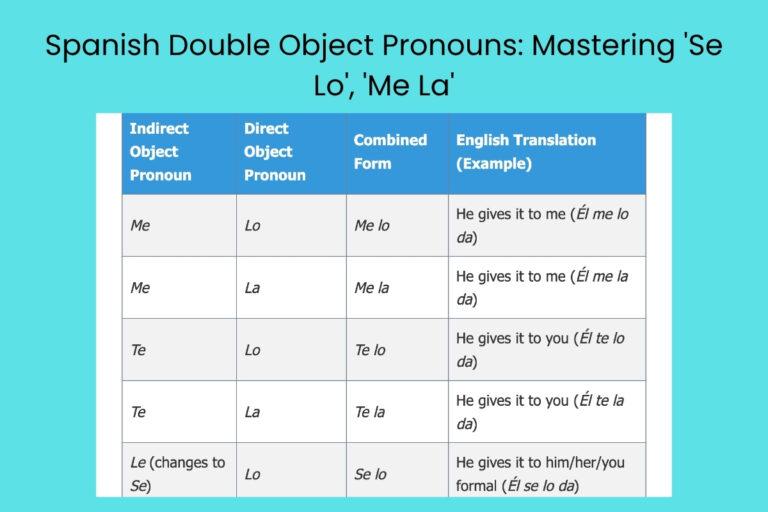Spanish Boot Verbs: Mastering Stem-Changing Verbs
Understanding Spanish boot verbs, also known as stem-changing verbs, is crucial for achieving fluency in Spanish. These verbs undergo a change in their stem vowel in certain conjugations, making them a unique and sometimes challenging aspect of Spanish grammar.
Mastering boot verbs is essential for accurate and natural communication, allowing you to express yourself correctly in various tenses and moods. This article will provide a comprehensive guide to boot verbs, covering their definition, types, conjugation rules, and common mistakes.
This guide is beneficial for students of all levels, from beginners seeking to build a solid foundation to advanced learners aiming to refine their grammar skills.
Table of Contents
- Definition of Spanish Boot Verbs
- Structural Breakdown
- Types and Categories of Boot Verbs
- Examples of Boot Verbs
- Usage Rules for Boot Verbs
- Common Mistakes with Boot Verbs
- Practice Exercises
- Advanced Topics
- Frequently Asked Questions (FAQ)
- Conclusion
Definition of Spanish Boot Verbs
Spanish boot verbs, more formally known as stem-changing verbs, are verbs that undergo a vowel change in the stem of the verb in certain conjugations. The “stem” of a verb is the part that remains after removing the infinitive ending (-ar, -er, or -ir). The vowel change occurs in all forms except for the nosotros and vosotros forms in the present tense. This pattern creates a shape resembling a boot when the verb conjugations are written out, hence the nickname “boot verbs.”
These verbs are classified based on the specific vowel change that occurs. The most common types involve a change from e to ie, o to ue, and e to i. Understanding these changes is critical because they affect the pronunciation and meaning of the verb in different contexts. They function grammatically as regular verbs in terms of their endings (e.g., -o, -as, -a, -amos, -áis, -an), but the stem vowel alteration sets them apart.
Boot verbs are frequently used in everyday conversation to express actions, states, and conditions. They appear in simple sentences as well as more complex grammatical structures.
Learning to recognize and correctly conjugate these verbs is crucial for both understanding and producing accurate Spanish.
Structural Breakdown
The structural breakdown of boot verbs involves identifying the stem and understanding where the vowel change occurs. Let’s consider the verb *pensar* (to think), which is an e to ie stem-changing verb.
The infinitive is *pensar*, and the stem is *pens-*. The vowel that changes is the *e* in the stem.
In conjugations where the stem changes, the *e* becomes *ie*.
Here’s a breakdown of how *pensar* is conjugated in the present tense:
- Yo pienso (I think)
- Tú piensas (You think)
- Él/Ella/Usted piensa (He/She/You think)
- Nosotros/Nosotras pensamos (We think)
- Vosotros/Vosotras pensáis (You all think)
- Ellos/Ellas/Ustedes piensan (They/You all think)
Notice that the *nosotros* and *vosotros* forms do not undergo the stem change. This is a consistent pattern for all boot verbs in the present tense.
The stem change only appears in the yo, tú, él/ella/usted, and ellos/ellas/ustedes forms. It’s also important to note that the verb endings remain consistent with regular -ar verbs.
This structural understanding helps to predict and correctly conjugate other boot verbs. By identifying the stem and the specific vowel change, learners can apply the pattern across different verbs.
This approach makes the process of learning boot verbs more systematic and less daunting.
Types and Categories of Boot Verbs
Spanish boot verbs can be classified into several categories based on the type of vowel change that occurs in the stem. The most common categories are:
E to IE Stem-Changing Verbs
These verbs change the *e* in their stem to *ie* in the specified conjugations. Examples include *pensar* (to think), *querer* (to want), *empezar* (to begin), *entender* (to understand), and *preferir* (to prefer).
O to UE Stem-Changing Verbs
These verbs change the *o* in their stem to *ue* in the specified conjugations. Examples include *poder* (to be able to), *dormir* (to sleep), *volver* (to return), *encontrar* (to find), and *almorzar* (to have lunch).
E to I Stem-Changing Verbs
These verbs change the *e* in their stem to *i* in the specified conjugations. These are generally -ir verbs.
Examples include *pedir* (to ask for), *servir* (to serve), *repetir* (to repeat), *seguir* (to follow), and *vestir* (to dress).
U to UE Stem-Changing Verbs
There is only one common verb in this category: *jugar* (to play). This verb changes the *u* in its stem to *ue* in the specified conjugations.
Understanding these categories makes it easier to identify and conjugate boot verbs correctly. By recognizing the type of stem change, learners can apply the appropriate pattern and avoid common mistakes.
Each category has its own set of verbs that follow the same conjugation rules, making it easier to learn them in groups.
Examples of Boot Verbs
To further illustrate the concept of boot verbs, let’s look at detailed conjugation examples for each category. These examples will show how the stem change occurs in the present tense and how the nosotros and vosotros forms remain unchanged.
E to IE Examples
The following table provides examples of e to ie stem-changing verbs conjugated in the present tense.
| Verb | Yo | Tú | Él/Ella/Usted | Nosotros/Nosotras | Vosotros/Vosotras | Ellos/Ellas/Ustedes |
|---|---|---|---|---|---|---|
| Pensar (to think) | Pienso | Piensas | Piensa | Pensamos | Pensáis | Piensan |
| Querer (to want) | Quiero | Quieres | Quiere | Queremos | Queréis | Quieren |
| Empezar (to begin) | Empiezo | Empiezas | Empieza | Empezamos | Empezáis | Empiezan |
| Entender (to understand) | Entiendo | Entiendes | Entiende | Entendemos | Entendéis | Entienden |
| Preferir (to prefer) | Prefiero | Prefieres | Prefiere | Preferimos | Preferís | Prefieren |
| Cerrar (to close) | Cierro | Cierras | Cierra | Cerramos | Cerráis | Cierran |
| Comenzar (to start) | Comienzo | Comienzas | Comienza | Comenzamos | Comenzáis | Comienzan |
| Despertar (to wake up) | Despierto | Despiertas | Despierta | Despertamos | Despertáis | Despiertan |
| Negar (to deny) | Niego | Niegas | Niega | Negamos | Negáis | Niegan |
| Sentar (to sit) | Siento | Sientas | Sienta | Sentamos | Sentáis | Sientan |
| Apretar (to tighten) | Aprieto | Aprietas | Aprieta | Apretamos | Apretáis | Aprietan |
| Atravesar (to cross) | Atravieso | Atraviesas | Atraviesa | Atravesamos | Atravesáis | Atraviesan |
| Confesar (to confess) | Confieso | Confiesas | Confiesa | Confesamos | Confesáis | Confiesan |
| Convertir (to convert) | Convierto | Conviertes | Convierte | Convertimos | Convertís | Convierten |
| Defender (to defend) | Defiendo | Defiendes | Defiende | Defendemos | Defendéis | Defienden |
| Helar (to freeze) | Hielo | Hielas | Hiela | Helamos | Heláis | Hielan |
| Manifestar (to manifest) | Manifiesto | Manifiestas | Manifiesta | Manifestamos | Manifestáis | Manifiestan |
| Merendar (to snack) | Meriendo | Meriendas | Merienda | Merendamos | Merendáis | Meriendan |
| Recomendar (to recommend) | Recomiendo | Recomiendas | Recomienda | Recomendamos | Recomendáis | Recomiendan |
| Sembrar (to sow) | Siembro | Siembras | Siembra | Sembramos | Sembráis | Siembran |
This table clearly shows the stem change in the specified forms and the unchanged nosotros and vosotros forms. These verbs are common and used in a variety of contexts.
O to UE Examples
The following table provides examples of o to ue stem-changing verbs conjugated in the present tense.
| Verb | Yo | Tú | Él/Ella/Usted | Nosotros/Nosotras | Vosotros/Vosotras | Ellos/Ellas/Ustedes |
|---|---|---|---|---|---|---|
| Poder (to be able to) | Puedo | Puedes | Puede | Podemos | Podéis | Pueden |
| Dormir (to sleep) | Duermo | Duermes | Duerme | Dormimos | Dormís | Duermen |
| Volver (to return) | Vuelvo | Vuelves | Vuelve | Volvemos | Volvéis | Vuelven |
| Encontrar (to find) | Encuentro | Encuentras | Encuentra | Encontramos | Encontráis | Encuentran |
| Almorzar (to have lunch) | Almuerzo | Almuerzas | Almuerza | Almorzamos | Almorzáis | Almuerzan |
| Contar (to count/tell) | Cuento | Cuentas | Cuenta | Contamos | Contáis | Cuentan |
| Costar (to cost) | Cuesto | Cuestas | Cuesta | Costamos | Costáis | Cuestan |
| Mostrar (to show) | Muestro | Muestras | Muestra | Mostramos | Mostráis | Muestran |
| Probar (to try/taste) | Pruebo | Pruebas | Prueba | Probamos | Probáis | Prueban |
| Recordar (to remember) | Recuerdo | Recuerdas | Recuerda | Recordamos | Recordáis | Recuerdan |
| Renovar (to renew) | Renuevo | Renuevas | Renueva | Renovamos | Renováis | Renuevan |
| Resolver (to resolve) | Resuelvo | Resuelves | Resuelve | Resolvemos | Resolvéis | Resuelven |
| Sonar (to sound) | Sueno | Suenas | Suena | Sonamos | Sonáis | Suenan |
| Tostar (to toast) | Tuesto | Tuestas | Tuesta | Tostamos | Tostáis | Tuestan |
| Tronar (to thunder) | Trueno | Truenas | Truena | Tronamos | Tronáis | Truenan |
| Colgar (to hang) | Cuelgo | Cuelgas | Cuelga | Colgamos | Colgáis | Cuelgan |
| Moler (to grind) | Muelo | Mueles | Muele | Molemos | Moléis | Muelen |
| Oler (to smell) | Huelo | Hueles | Huele | Olemos | Oléis | Huelen |
| Soler (to usually do) | Suelo | Sueles | Suele | Solemos | Soléis | Suelen |
| Aprobar (to approve) | Apruebo | Apruebas | Aprueba | Aprobamos | Aprobáis | Aprueban |
Again, this table highlights the consistent pattern of the o to ue stem change and the unchanged nosotros and vosotros forms. These verbs are essential for expressing various actions and states.
E to I Examples
The following table provides examples of e to i stem-changing verbs conjugated in the present tense. These are usually -ir verbs.
| Verb | Yo | Tú | Él/Ella/Usted | Nosotros/Nosotras | Vosotros/Vosotras | Ellos/Ellas/Ustedes |
|---|---|---|---|---|---|---|
| Pedir (to ask for) | Pido | Pides | Pide | Pedimos | Pedís | Piden |
| Servir (to serve) | Sirvo | Sirves | Sirve | Servimos | Servís | Sirven |
| Repetir (to repeat) | Repito | Repites | Repite | Repetimos | Repetís | Repiten |
| Seguir (to follow) | Sigo | Sigues | Sigue | Seguimos | Seguís | Siguen |
| Vestir (to dress) | Visto | Vistes | Viste | Vestimos | Vestís | Visten |
| Competir (to compete) | Compito | Compites | Compite | Competimos | Competís | Compiten |
| Concebir (to conceive) | Concibo | Concibes | Concibe | Concebimos | Concebís | Conciben |
| Corregir (to correct) | Corrijo | Corriges | Corrige | Corregimos | Corregís | Corrigen |
| Derretir (to melt) | Derrito | Derrites | Derrite | Derretimos | Derretís | Derriten |
| Despedir (to fire) | Despido | Despides | Despide | Despedimos | Despedís | Despiden |
| Elegir (to choose) | Elijo | Eliges | Elige | Elegimos | Elegís | Eligen |
| Freír (to fry) | Frío | Fríes | Fríe | Freímos | Freís | Fríen |
| Gemir (to groan) | Gimo | Gimes | Gime | Gemimos | Gemís | Gimen |
| Hervir (to boil) | Hiervo | Hierves | Hierve | Hervimos | Hervís | Hierven |
| Impedir (to prevent) | Impido | Impides | Impide | Impedimos | Impedís | Impiden |
| Medir (to measure) | Mido | Mides | Mide | Medimos | Medís | Miden |
| Reír (to laugh) | Río | Ríes | Ríe | Reímos | Reís | Ríen |
| Rendir (to surrender) | Rindo | Rindes | Rinde | Rendimos | Rendís | Rinden |
| Teñir (to dye) | Tiño | Tiñes | Tiñe | Teñimos | Teñís | Tiñen |
| Sonreír (to smile) | Sonrío | Sonríes | Sonríe | Sonreímos | Sonreís | Sonríen |
These tables provide a comprehensive overview of the most common types of boot verbs and their conjugations in the present tense. Reviewing these examples will help you recognize and use these verbs correctly in your Spanish communication.
Usage Rules for Boot Verbs
Several rules govern the proper usage of boot verbs. These rules ensure that the stem change is applied correctly and that the verb is conjugated appropriately in different tenses and moods.
Irregular “Yo” Forms
Some boot verbs have irregular “yo” forms in the present tense, in addition to the stem change. One example is the verb *hacer* (to do/make).
While not a traditional boot verb, it has an irregular *yo* form: *yo hago*. Another example is *tener* (to have): *yo tengo*.
It’s important to memorize these irregular forms to avoid mistakes.
Stem Changes in the Preterite
In the preterite tense (past simple), only -ir verbs that are E to I stem-changing verbs in the present tense will have a stem change in the *él/ella/usted* and *ellos/ellas/ustedes* forms. The *e* changes to *i*.
For example, the preterite of *pedir* is:
- Yo pedí
- Tú pediste
- Él/Ella/Usted pidió
- Nosotros/Nosotras pedimos
- Vosotros/Vosotras pedisteis
- Ellos/Ellas/Ustedes pidieron
Note the stem change in the third-person singular and plural forms.
Boot Verbs in the Subjunctive Mood
Boot verbs maintain their stem changes in the subjunctive mood. The subjunctive mood is used to express doubt, uncertainty, wishes, and emotions.
For example, the subjunctive of *querer* (to want) is:
- Que yo quiera
- Que tú quieras
- Que él/ella/usted quiera
- Que nosotros/nosotras queramos
- Que vosotros/vosotras queráis
- Que ellos/ellas/ustedes quieran
The stem change *e* to *ie* is maintained in the subjunctive forms, except for the *nosotros* and *vosotros* forms, which do not have the stem change.
Common Mistakes with Boot Verbs
Several common mistakes are made by learners when using boot verbs. Being aware of these errors can help you avoid them.
- Incorrectly applying the stem change to the nosotros and vosotros forms: Remember that the stem change does not occur in these forms in the present tense.
- Incorrect: Nosotros piensemos.
- Correct: Nosotros pensamos.
- Forgetting the irregular “yo” forms: Some boot verbs have irregular “yo” forms that must be memorized.
- Incorrect: Yo tengo miedo.
- Correct: Yo tengo miedo.
- Misunderstanding stem changes in the preterite: Only -ir verbs that are E to I stem-changing in the present tense will have a stem change in the preterite.
- Incorrect: Él durmió mucho.
- Correct: Él durmió mucho.
- Incorrect: Él repitió la pregunta.
- Correct: Él repitió la pregunta.
- Ignoring stem changes in the subjunctive mood: Boot verbs maintain their stem changes in the subjunctive mood.
- Incorrect: Que tú quieras ir.
- Correct: Que tú quieras ir.
Practice Exercises
To reinforce your understanding of boot verbs, complete the following practice exercises.
Exercise 1: Conjugation Practice
Conjugate the following verbs in the present tense.
| Verb | Yo | Tú | Él/Ella/Usted | Nosotros/Nosotras | Vosotros/Vosotras | Ellos/Ellas/Ustedes |
|---|---|---|---|---|---|---|
| Querer | ||||||
| Poder | ||||||
| Pedir | ||||||
| Pensar | ||||||
| Dormir |
Answer Key:
| Verb | Yo | Tú | Él/Ella/Usted | Nosotros/Nosotras | Vosotros/Vosotras | Ellos/Ellas/Ustedes |
|---|---|---|---|---|---|---|
| Querer | Quiero | Quieres | Quiere | Queremos | Queréis | Quieren |
| Poder | Puedo | Puedes | Puede | Podemos | Podéis | Pueden |
| Pedir | Pido | Pides | Pide | Pedimos | Pedís | Piden |
| Pensar | Pienso | Piensas | Piensa | Pensamos | Pensáis | Piensan |
| Dormir | Duermo | Duermes | Duerme | Dormimos | Dormís | Duermen |
Exercise 2: Sentence Completion
Complete the following sentences with the correct form of the verb in parentheses.
- Yo ________ (pensar) que es una buena idea.
- Ellos ________ (volver) a casa tarde.
- Nosotros ________ (pedir) la cuenta.
- Tú ________ (empezar) a estudiar ahora.
- Él ________ (dormir) mucho los fines de semana.
- ¿Vosotros ________ (querer) ir al cine?
- Ustedes ________ (entender) la lección.
- Ella ________ (preferir) el café con leche.
- Yo siempre ________ (repetir) las instrucciones.
- Nosotros no ________ (encontrar) las llaves.
Answer Key:
- Yo pienso (pensar) que es una buena idea.
- Ellos vuelven (volver) a casa tarde.
- Nosotros pedimos (pedir) la cuenta.
- Tú empiezas (empezar) a estudiar ahora.
- Él duerme (dormir) mucho los fines de semana.
- ¿Vosotros queréis (querer) ir al cine?
- Ustedes entienden (entender) la lección.
- Ella prefiere (preferir) el café con leche.
- Yo siempre repito (repetir) las instrucciones.
- Nosotros no encontramos (encontrar) las llaves.
Exercise 3: Error Correction
Correct the errors in the following sentences.
- Yo pensamos que es importante.
- Ellos duermo en la cama.
- Nosotros pido la comida.
- Tú quieres ir al parque.
- Él puede nadar muy bien.
- Vosotros entienden la pregunta?
- Usted prefiere el té o el café?
- Ella repite la lección.
- Yo empiezas a trabajar.
- Nosotros volvemos mañana.
Answer Key:
- Yo pienso que es importante.
- Ellos duermen en la cama.
- Nosotros pedimos la comida.
- Tú quieres ir al parque. (Correct)
- Él puede nadar muy bien. (Correct)
- Vosotros entendéis la pregunta?
- Usted prefiere el té o el café? (Correct)
- Ella repite la lección.(Correct)
- Yo empiezo a trabajar.
- Nosotros volvemos mañana. (Correct)
Advanced Topics
For learners who have mastered the basics of boot verbs, there are several advanced topics that can further enhance their understanding and usage.
Radical Changing Verbs
Radical-changing verbs, also known as “irregular yo” verbs, have irregularities in the first-person singular (yo) form in the present tense. These verbs may or may not also be stem-changing verbs.
For example, the verb *hacer* (to do/make) is not stem-changing, but it has an irregular *yo* form: *yo hago*. Similarly, *tener* (to have) is a stem-changing verb (e to ie), but it also has an irregular *yo* form: *yo tengo*.
It’s important to recognize these verbs and memorize their irregular forms.
Orthographic Changes
Some verbs undergo orthographic (spelling) changes to maintain pronunciation. These changes often occur with verbs ending in -car, -gar, and -zar.
For example, the verb *empezar* (to begin), which is an e to ie stem-changing verb, changes its *z* to a *c* before the *e* in the *yo* form to maintain the correct sound: *yo empiezo*. Similarly, verbs ending in -gar, like *jugar* (to play), change the *g* to *gu* before *e* in the preterite *yo* form: *yo jugué*.
These orthographic changes are essential for correct spelling and pronunciation.
Frequently Asked Questions (FAQ)
Conclusion
Mastering Spanish boot verbs is essential for achieving fluency and accuracy in Spanish. By understanding the types of stem changes, learning the conjugation rules, and practicing regularly, you can confidently use these verbs in your communication.
Remember to pay attention to common mistakes and exceptions, and continue to expand your knowledge through advanced topics. With dedication and practice, you’ll be able to navigate the nuances of boot verbs and enhance your overall Spanish language skills.

